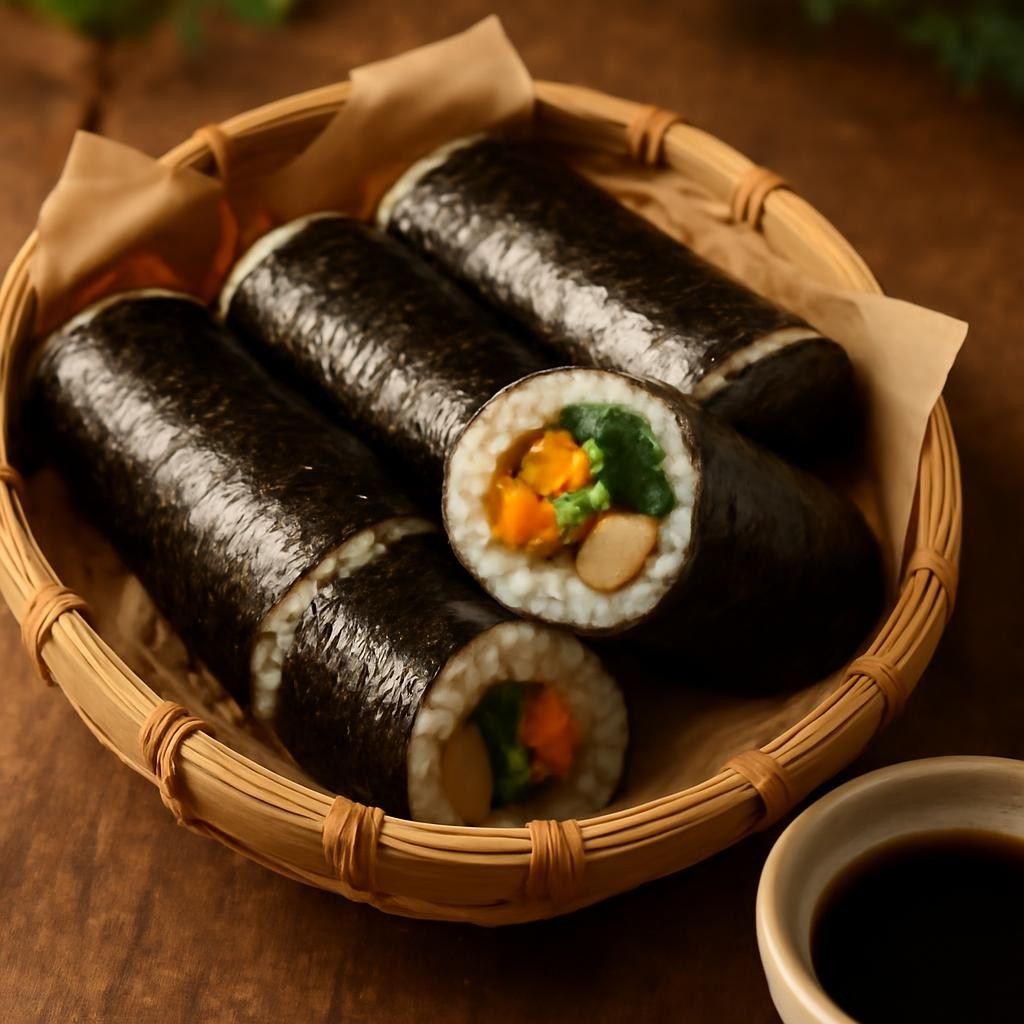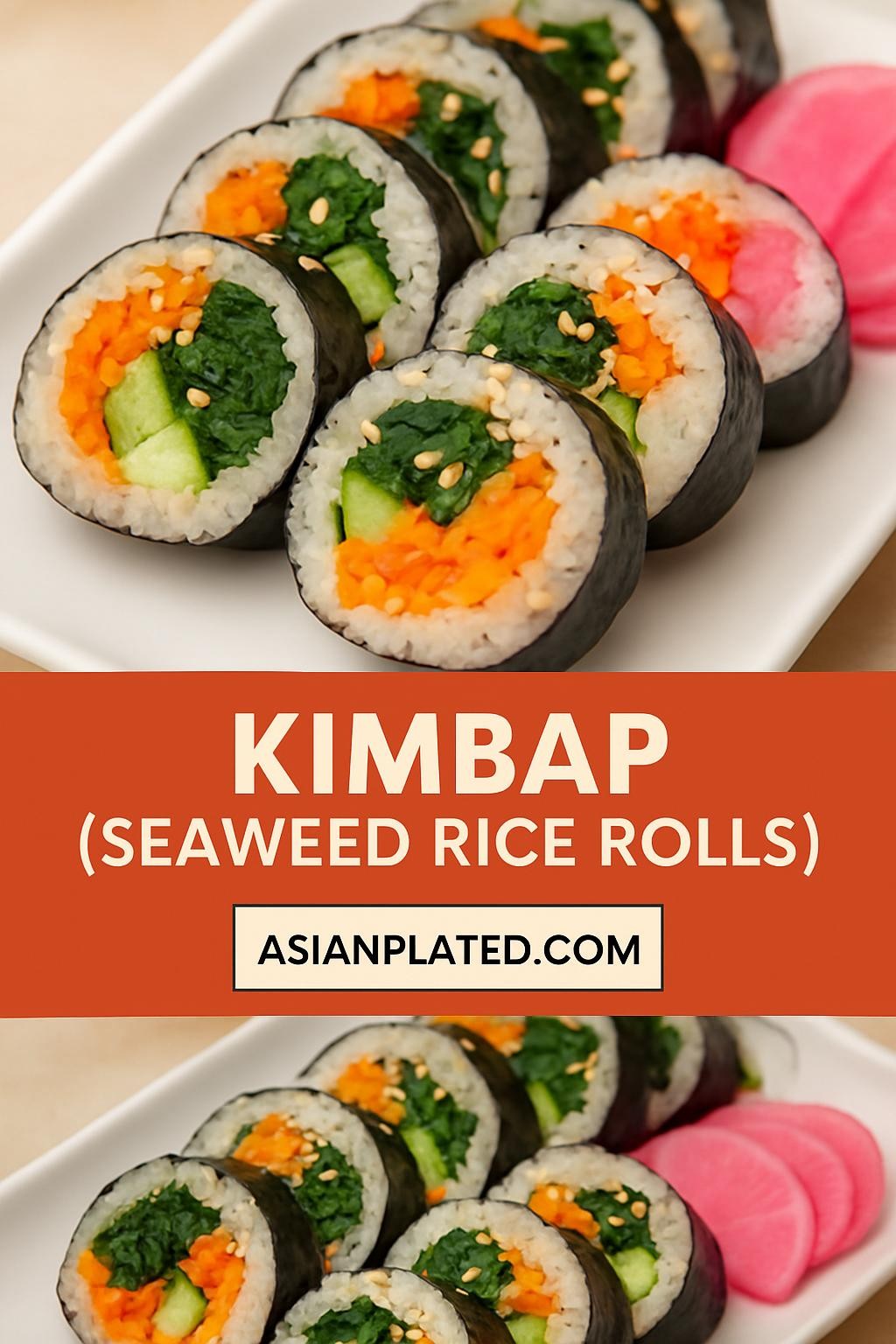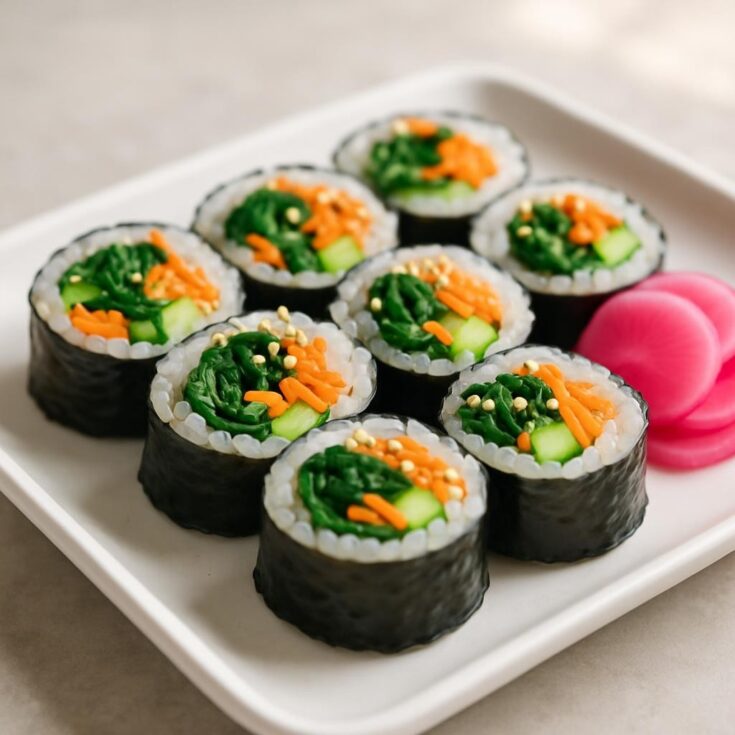Kimbap, or Korean seaweed rice rolls, is a delightful and nutritious dish that has captured the hearts of food lovers around the world. This versatile recipe combines seasoned rice, fresh vegetables, and protein, all wrapped in a sheet of seaweed, creating a stunning presentation that’s as pleasing to the eye as it is to the palate. Perfect for picnics, lunchboxes, or a light dinner, kimbap is not only delicious but also customizable to suit your taste preferences.

Why You Will Love This Recipe
You’ll adore this kimbap recipe for its vibrant flavors and ease of preparation. The combination of savory, sweet, and umami notes creates a satisfying bite that is both refreshing and hearty. Whether you’re following a vegetarian, vegan, or gluten-free diet, kimbap can easily be adapted to fit your lifestyle. Plus, it’s a fun dish to assemble, making it a great activity for cooking with friends or family.
Tips and Tricks
To make your kimbap experience even better, here are some handy tips:
- Use short-grain sushi rice for the best texture; it sticks together perfectly for rolling.
- Mix a little sesame oil into your rice for added flavor.
- Don’t overfill your rolls; a little goes a long way. This makes rolling easier and prevents spills.
- When rolling, use a bamboo mat for an even and tight roll, but if you don’t have one, a clean kitchen towel works in a pinch.
- Allow your rolls to rest for about 10 minutes before slicing; this helps the rice set.
Make Ahead Tips
Kimbap is a fantastic make-ahead meal:
- Prepare the rice and let it cool completely before storing it in the refrigerator for up to 2 days.
- Chop your vegetables and protein in advance; they can stay fresh in an airtight container for 2-3 days.
- Roll the kimbap the night before, but keep it wrapped in a damp paper towel and sealed in plastic to maintain moisture.

Recipe Variations
Feel free to get creative with your kimbap:
- Swap out vegetables based on what’s in season, such as using radishes in the spring or roasted sweet potatoes in the fall.
- Add different proteins like bulgogi beef, chicken, or tofu for a heartier roll.
- Experiment with sauces; try a spicy gochujang sauce for a kick or a sweet soy glaze.
How to Serve
Kimbap is best served fresh and can be cut into bite-sized pieces for easy eating. Arrange the slices on a beautiful platter, and consider garnishing with sesame seeds or thinly sliced scallions for an appealing touch. Serve alongside pickled radishes for a classic accompaniment.

Pairing Suggestions
Enhance your kimbap experience with refreshing drink pairings. Try a light, fruity soju or a crisp Korean beer to complement the flavors. For a non-alcoholic option, iced green tea is a perfect match. Side dishes like kimchi or a simple cucumber salad can elevate your meal further.
How to Store
Leftover kimbap can be stored in the refrigerator for up to 2 days. Wrap individual rolls in plastic wrap to keep them fresh. While freezing is possible, it may affect the texture, so it’s best to enjoy them fresh. To reheat, simply let them come to room temperature before enjoying.
Equipment Needed
You will need a few essential tools to make kimbap:
- A bamboo sushi mat for rolling
- A sharp knife for slicing
- A rice cooker or pot for cooking the rice
- A cutting board for prepping your ingredients

Dietary Adaptations
Kimbap can easily be adapted for various dietary needs:
- For a vegan version, use avocado, cucumber, and carrots and skip the meat.
- To make it gluten-free, ensure you use gluten-free soy sauce and check the seaweed package for any gluten-containing additives.
- Nut-free options can be achieved by avoiding sesame oil and using alternative oils.
Seasonal Adaptations
Adapt your kimbap based on the seasons:
- In spring, use asparagus and fresh herbs for a bright flavor.
- Summer kimbap can incorporate fresh tomatoes and zucchini.
- Fall flavors can include roasted pumpkin or butternut squash.
- Winter kimbap can benefit from hearty ingredients like cooked root vegetables.
Recipe FAQs
Can I use brown rice instead of white rice?
Yes, but note that brown rice has a different texture and may require longer cooking time.
What can I substitute for seaweed?
You can use rice paper wraps if you’re looking for an alternative.
How long do I need to cook the rice?
Typically, sushi rice takes about 20 minutes on the stovetop or 10 minutes in a rice cooker.
Kimbap (Seaweed Rice Rolls)

Kimbap, or Korean seaweed rice rolls, is a delightful and nutritious dish that has captured the hearts of food lovers around the world.
Ingredients
- 2 cups short-grain sushi rice
- 2 ½ cups water
- 5 sheets of nori (seaweed)
- 1 cup spinach, blanched
- 1 carrot, julienned
- 1 cucumber, julienned
- 3-4 eggs, scrambled (or tofu for a vegan option)
- 2 tablespoons sesame oil
- 1 tablespoon soy sauce
- Salt to taste
- Sesame seeds for garnish
Instructions
- Rinse the sushi rice under cold water until the water runs clear. This removes excess starch.
- In a rice cooker or pot, combine the rinsed rice and water. Cook according to the rice cooker instructions or bring to a boil, then cover and simmer for 20 minutes.
- Once cooked, transfer the rice to a bowl and mix in sesame oil, soy sauce, and salt. Allow it to cool.
- While the rice cooks, prepare the fillings: blanch spinach in boiling water for a minute, drain and set aside. Sauté carrots in a pan until slightly tender, and scramble the eggs or tofu until cooked.
- Place a sheet of nori on a bamboo mat, shiny side down. Spread a thin layer of seasoned rice over the nori, leaving a 1-inch border at the top.
- Layer the spinach, carrots, cucumber, and scrambled eggs/tofu across the rice.
- Starting from the bottom, use the bamboo mat to roll the nori tightly over the fillings, pressing gently.
- Once rolled, use a sharp knife to slice the kimbap into bite-sized pieces. Wipe the knife with a damp cloth between cuts for cleaner slices.
- Arrange on a serving platter, garnish with sesame seeds, and serve with pickled radishes.
Nutrition Information:
Yield: 4 Serving Size: 1Amount Per Serving: Calories: 336Total Fat: 18gSaturated Fat: 4gTrans Fat: 0gUnsaturated Fat: 13gCholesterol: 169mgSodium: 646mgCarbohydrates: 33gFiber: 3gSugar: 5gProtein: 12g
Asianplated.com, occasionally offers nutritional information for recipes contained on this site. This information is provided as a courtesy and is an estimate only. This information comes from online calculators. Although allchickenrecipes.com attempts to provide accurate nutritional information, these figures are only estimates.
Final Thoughts
Kimbap is more than just a meal; it’s an experience that brings people together. With its colorful ingredients and delightful flavors, this dish is sure to impress at any gathering or family dinner. Take the time to enjoy the process of making it, and don’t hesitate to customize it to fit your tastes. Happy rolling!
